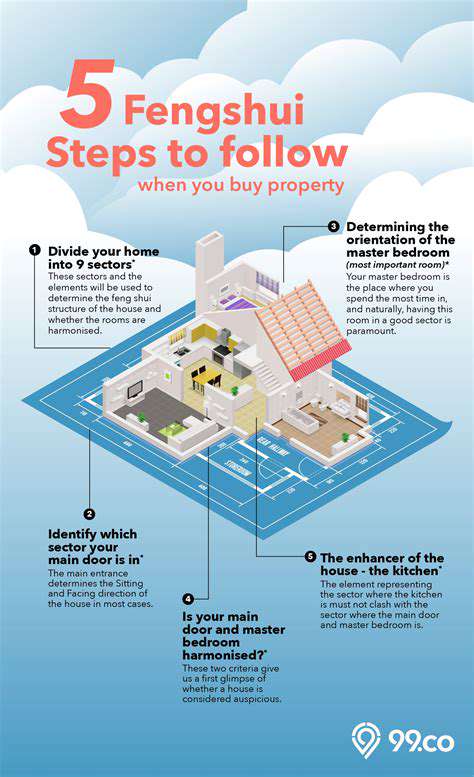Ways to ease anxiety with calming design
Strategic Use of Lighting for a Calming Atmosphere
Creating a Sense of Tranquility
Strategic lighting plays a crucial role in establishing a calming atmosphere, impacting our mood and overall well-being. Soft, diffused light sources, like warm-toned lamps or ambient lighting fixtures, create a sense of peace and serenity. These types of lighting avoid harsh shadows and direct glare, fostering a relaxed ambiance that encourages relaxation and reduces feelings of stress. The goal is to create a space that feels inviting and comforting, not stimulating or overwhelming.
Imagine a room bathed in gentle, warm light, rather than stark fluorescent lighting. The subtle variations in light and shadow create a sense of depth and intimacy, further enhancing the feeling of tranquility. This subtle play of light and shade is a key element in crafting a space that promotes calmness and reduces anxiety.
Utilizing Different Light Sources
Employing a variety of light sources is key to a well-rounded and calming lighting scheme. A combination of ambient, task, and accent lighting can create a dynamic and soothing environment. Ambient lighting provides the general illumination, while task lighting focuses on specific areas for focused activities, like reading or working. Accent lighting highlights architectural details or artwork, adding depth and visual interest without overwhelming the senses.
Using dimmable lights allows you to adjust the intensity of the lighting throughout the day, or even throughout the evening. This adaptability is important, as the ideal light level for relaxation might differ from the light needed for focused work. The ability to adjust the lighting creates a versatile and calming space responsive to your needs.
Color Temperature and Light Intensity
The color temperature of your light significantly affects the atmosphere. Warm-toned light, with a lower Kelvin rating, evokes feelings of comfort and coziness, promoting relaxation and reducing feelings of stress. Cool-toned light, with a higher Kelvin rating, can feel stimulating and energizing, potentially exacerbating anxiety in some cases. Consider using warm white or soft white bulbs to create a calming environment. The intensity of the light also matters, with lower levels of light being conducive to relaxation and sleep. Adjust the intensity of lights throughout the day to optimize the ambiance.
Beyond the Bulbs: The Role of Placement
The placement of lighting fixtures is just as important as the type of bulb. Strategic placement of lamps and other light sources can create focal points and highlight areas in a room, while avoiding harsh shadows. Positioning lights to avoid direct glare on the eyes is essential for creating a calming and comfortable environment. The careful arrangement of lighting fixtures can create a sense of space and depth, making the room feel more inviting and less overwhelming. Consider the shape and size of the room when selecting and arranging lighting fixtures, to create the most harmonious and soothing effect.











